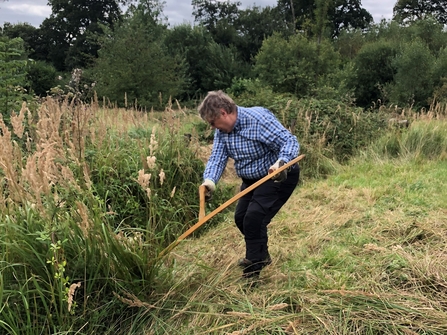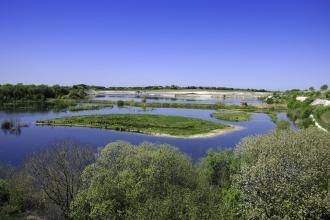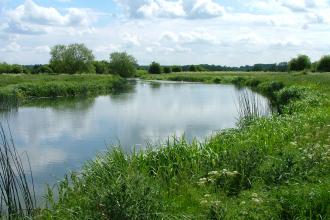September is a time of great change in Finemere Wood. As the dazzling colours of summer flowers fade, warm autumnal hues take their place. Leaves turn scarlet and gold and gracefully float to the ground. Clusters of berries, deep purples and reds, are abundant along the hedgerows: blackberries, sloes, haws, and rose hips. Fungi, in shades of orange, yellow and brown take hold.
The volunteers are itching to get hold of saws once more and to move on to the winter work of cutting down trees and shrubs. But the endless summer cutting and raking of grassy rides and glades is not yet complete. This task is an important one as it not only prevents the encroachment of scrub but also keeps competitive plants under control, thus allowing a diverse array of the more delicate wildflowers to flourish year on year.




